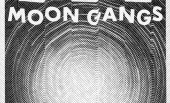Jon Hopkins had the dubious honour of being dubbed ‘the next Brian Eno’ by The Guardian this week. Not dubious because it was an unflattering comparison, obviously, but because it guaranteed a raft of outraged musos spluttering below the line about how there would NEVER be another Brian Eno and how DARE the paper even suggest it – the man is still alive for goodness sake!
Putting to one side that it’s highly unlikely journalist Jude Rogers wrote the headline in question, the reason Brian Eno comes up at all in reference to Jon Hopkins is because they’ve actually been working with each other for almost a decade. After hearing Hopkins’ second album ‘Contact Note’ in 2004, he invited the young musician to play on his ‘Another Day on Earth’ album, kicking off a long-running collaborative relationship.
Indeed, after becoming disillusioned with his own work being overlooked, Hopkins ended up finding a great deal of success working with others. Through Eno he ended up becoming involved on Coldplay’s last two albums, while his records with Fence Collective mainstay King Creosote earned the pair a Mercury Prize nomination in 2011. A film score for cult Brit sci-fi flick ‘Monsters’ also saw him up for an Ivor Novello award (Hopkins’ Twitter bio sardonically reads “Ivor Novello Award and Mercury Prize losing artist”).
Yet for all his success as a composer, you sense that his personal work is what he really craves to be recognised for. While his last effort, 2009’s ‘Insides’, was warmly received by many, it didn’t really raise his profile as a solo artist. ‘Immunity’, however, is already doing just that. We may only be in June, but this is an album that is certain to wriggle onto umpteen ‘best of 2013’ lists by the end of the year.
Classically trained yet obsessed with synths and electronics from a young age, ‘Immunity’ combines his two obsessions with a clinical yet charming dexterity, like an amiable surgeon cheerfully humming to himself as he removes a particularly hermetical brain tumour. Hopkins records anything from dripping taps to reversing lorries for his tracks, but his musique concrète tendencies are always used to serve rather than distract. While some of the harder and more complex beats might put off fans of his more pedestrian earlier work, most will be left with their jaws swinging in the breeze at the sheer progression of it.
The first two tracks are particularly stunning. ‘We Disappear’ starts with a bunch of keys rattling in the door to his studio, which opens onto a feast of warm pulses and sharp glitches, descending into a languorous fade-out that’s like letting sugar-coated snowflakes melt on your lolling tongue. Then there’s the incredible ‘Open Eye Signal’, which revolves around an insectoid buzz of a bassline, swooping between tones like a smashed bee (apparently Hopkins spent a full six weeks on the bass alone – and it shows).
The latter is reminiscent of James Holden’s stunning ‘Lump’, and Hopkins employs a similarly exacting attitude, mixing magnificent, mutating music into scattershot electronics with such attention to detail that every bar sounds different. It’s miles away from the pre-set, drag ‘n’ drop laziness of many electronic musicians, yet also has a distinctly emotional feel that’s similarly distinct from the alien environments of Amon Tobin and the like.
As a case in point, ‘Breathe This Air’ employs an Apparat-esque mix of symphonic sounds and electronic beats. It’s lovely, but in a way that would be a little bland if it wasn’t for the shattered garage beat underneath – a bit like Gwyneth Paltrow on a bed of nails. ‘Collider’ is well-placed to follow it, a punishing beast that actually sounds like it’s being blasted through the Large Hadron Collider itself. It’s a huge but bracingly airy sound, with a slight drag to the beat providing the sensation of intense g-force being applied to your eardrums.
The second half of the album struggles a little to bear the weight of the opening half’s brilliance. The intimately cinematic ‘Abandon Window’ is wonderfully recorded but a little dull, while ‘Form by Firelight’, in what is, to be honest, probably a hugely misleading comparison, but the one that immediately sprang to mind, sounds like an Autechre remix of Kanye West’s interminable ‘Runaway’.
Hopkins has spoken about ‘Immunity’ following the arc of a festival experience, and ‘Sun Harmonics’ feels like that moment when dawn breaks to reveal a thousand blinking ravers, staring around glassy-eyed with the echoes of a gurn still rippling across their faces in pure, wrecked wonderment. Unfortunately, it also sounds like a Gold Panda track with most of the more colourful elements removed, which is unfortunate as, at a dozen minutes, it’s the longest track on the album. In fact, the cavernous ambient coda is more interesting than what precedes it.
Still, much like a festival veteran emptying their baggies into a final wrap for the road, ‘Immunity’ ends on a high. The closing title track is a wonderfully muted piano piece with a rhythm created out of, well, god knows what – considering Hopkins’ habits probably a freezer defrosting, a game of Kerplunk being put away and the creaking of his own knees. Another incredibly gradual ending only serves to emphasise that this is a record he refused to rush.
To promote it, Hopkins collaborated with biochemist-cum-photographer Linden Gledhill to produce a video matching tracks from ‘Immunity’ to microscopic images of food dye crystallizing (see below). Also like his music, it was created using the wonders of modern technology, and could easily be mistaken as being wholly artificial. Like his music, it takes what seem like mundane natural processes and presents them in a way that’s often breathtaking. He may not be the next Brian Eno, but who cares? It’s Jon Hopkins’ name that’s on everyone’s lips right now…






Follow us
Follow us on Facebook Follow us on Twitter Follow us on Google+ Subscribe our newsletter Add us to your feeds